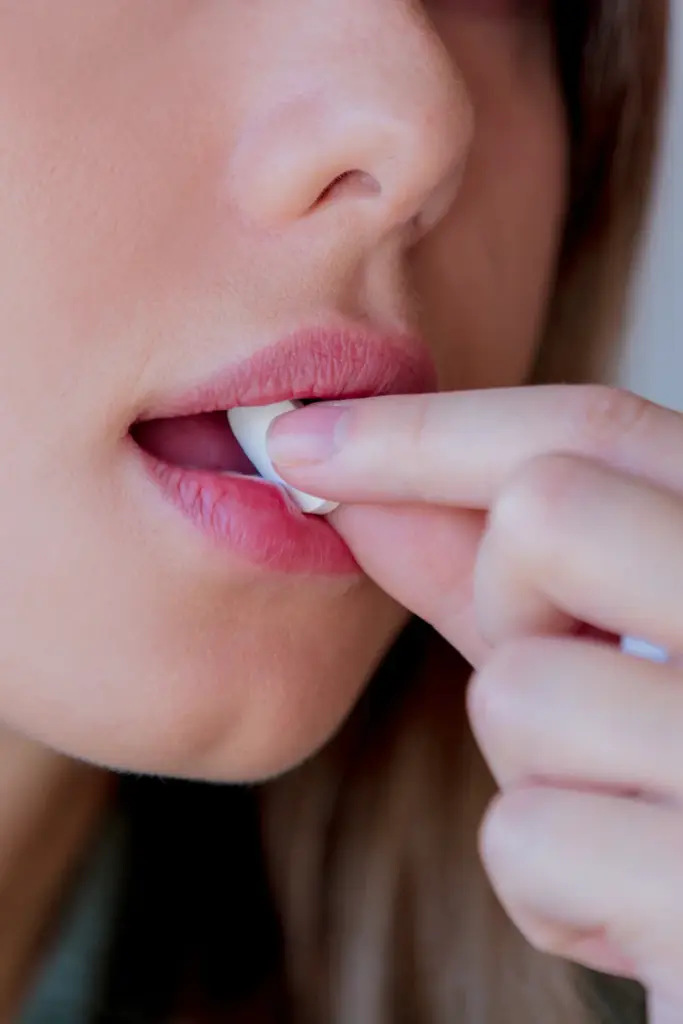Trazodone is often prescribed, but many patients find themselves puzzled about its classification.
Is trazodone a benzodiazepine? The short answer is no, but the nuances are crucial.
Trazodone works differently than benzodiazepines, impacting how it affects your body and mind. Let’s dive into the specifics and clear up the confusion surrounding this commonly prescribed medication.
Need help managing medication dependence safely? The Springboard Center’s medical detox program provides 24/7 medical supervision and personalized care to ensure a comfortable, secure withdrawal process.
What is Trazodone?
Trazodone is an antidepressant primarily used to treat major depressive disorder.
The trazodone medication class makes it a serotonin antagonist and reuptake inhibitor (SARI).
Originally developed in the 1960s, trazodone is often prescribed off-label for insomnia due to its sedative effects. By influencing serotonin levels in the brain, trazodone can help stabilize mood and improve sleep quality. This makes it a versatile choice for patients struggling with both anxiety and sleep disturbances.
What is Benzodiazepine?

Benzodiazepines, on the other hand, are a class of medications commonly prescribed for anxiety, insomnia, and seizure disorders.
They act on the central nervous system by enhancing the effects of the neurotransmitter gamma-aminobutyric acid (GABA). This leads to a calming effect, reducing anxiety and promoting sleep.
Examples include drugs like:
- Alprazolam (Xanax)
- Diazepam (Valium)
- Lorazepam (Ativan)
While effective, benzodiazepines come with risks, including dependence and withdrawal symptoms, making it essential for patients to understand their use and the potential for side effects.
Related: How Is a Medically Induced Drug Detox Treatment Administered?
Is Trazodone a Benzodiazepine?: Chemical Classification Facts
The distinction between trazodone and benzodiazepines is crucial for patients considering their treatment options, particularly when they wonder, “Is trazodone a benzodiazepine?”
Here are the key differences between trazodone and benzodiazepines:
- The structure: benzos, characterized by their benzene and diazepine rings, interact with GABA receptors to produce sedative and anxiolytic effects. Conversely, trazodone doesn’t engage with these receptors, which fundamentally alters its impact on the central nervous system.
- The dosages: Trazodone dosages generally start at 50-100 mg, significantly higher than the 0.25-0.5 mg range typical for benzodiazepines.
- The half-life: In understanding trazodone, the half-life — typically between 5-9 hours — plays an important role in treatment. This shorter duration contrasts with benzodiazepines, which can remain active in the system for anywhere from 6 to 48 hours, highlighting differences in potential accumulation and side effects.
- Dependency: Trazodone’s zero GABA receptor activity aligns with its distinct safety profile and lowers the risk of dependence commonly associated with benzodiazepines.
If you’re worried about a trazodone addiction risk in yourself or your family, the Springboard Center is here to help. Contact us about our medical detox program and residential program.
Effect Duration Differences

Sleep Benefits Kick in Quickly
If you’re struggling with insomnia, you might have appreciated trazodone sleep medication, which typically starts helping you feel sleepy within 30 to 60 minutes after taking it.
This quick onset can make it easier to stick to a bedtime routine, as you can plan your sleep around when the medication kicks in.
Antidepressant Effects Take Time
On the flip side, if you’re using trazodone for depression, you’ll need to be patient. The antidepressant effects usually take about 14 to 21 days to fully kick in.
This delay can be frustrating, especially when you’re hoping for immediate relief.
Morning Grogginess is Common
Of the trazodone side effects, one of the most prevalent is that many people feel a bit groggy when they wake up after taking trazodone, often for about 2 to 3 hours.
This can make your mornings feel a little sluggish, which might affect your daily activities.
Building Up Therapeutic Levels
Trazodone doesn’t just start working right away; it builds up in your system over 1 to 2 weeks. This gradual increase is why it’s crucial to take it consistently every day.
This is why having regular check-ins with your healthcare provider during this time can help fine-tune your treatment plan and address any side effects you might experience.
Are you or your loved one experiencing trazodone withdrawal symptoms? Explore our residential program to establish a strong foothold of recovery.
Sleep Benefits Begin 30-60 Minutes After Dosing
The quick onset of trazodone’s sedative properties can significantly improve sleep quality for those struggling with insomnia. Patients should be proactive in preparing for sleep in alignment with this timing to maximize the medication’s effectiveness.
Antidepressant Effects Take 14-21 Days to Start
Patience is key when taking trazodone for depression. This delay in experiencing full effects is crucial for patients to understand, helping to mitigate frustrations and improve adherence to treatment protocols.
Morning Grogginess Lasts 2-3 Hours After Waking
Many patients experience a period of grogginess upon waking, which can impact daily activities. Education about this potential side effect enables better management strategies, ensuring softer mornings and improved daily function.
Therapeutic Levels Build Over 1-2 Weeks
As trazodone builds therapeutic levels in the body, consistent usage becomes essential. This gradual accumulation enhances effectiveness and allows healthcare providers to tailor treatment plans as needed based on patient feedback.
Physical Dependence Patterns
It’s common to have concerns about dependence when starting any medication. With trazodone, it’s important to know that it doesn’t carry the same risks as benzodiazepines.
For example, you don’t have to worry about seizures if you stop taking it as directed. This makes trazodone a safer option for many people.
If you do need to stop taking trazodone, the process typically involves a tapering schedule of 2 to 4 weeks. This gradual reduction can help minimize withdrawal symptoms and avoid rebound insomnia, which might last about 3 to 5 days. Being prepared for this temporary phase can make it easier to cope, both emotionally and practically.
Another reassuring point is that trazodone has no street value, unlike benzodiazepines. This means that trazodone substance abuse is less likely to happen (though not impossible!).
A key point to note is that, when taken at normal doses, trazodone doesn’t carry the risk of respiratory depression — a serious issue often associated with benzodiazepines.
This aspect of the trazodone medication safety profile is especially reassuring for patients who may have other health conditions that make them more susceptible to complications. Knowing that trazodone is a safer option can help you feel more confident in your treatment plan.
Proper Usage Guidelines
To maximize trazodone’s benefits while minimizing adverse effects, following proper usage guidelines is essential.
Take 30-45 Minutes Before Desired Sleep Time
Experts recommend taking trazodone 30-45 minutes before the desired sleep time for optimal results. This timing allows the medication to reach therapeutic levels in alignment with a patient’s natural sleep cycle.
Developing a consistent bedtime routine that incorporates trazodone can further support effective sleep architecture.
Related: Can You Force Someone to Go to Rehab? A Guide for Concerned Families
Empty Stomach Increases Absorption
Taking trazodone on an empty stomach can increase absorption by approximately 25%. Patients should be encouraged to consider their dietary habits in relation to their medication timing, allowing for improved efficacy. Practical coaching from healthcare providers can assist patients in making dietary adjustments that complement their treatment.
Split Doses Over 100mg to Reduce Side Effects
For those prescribed doses exceeding 100 mg, splitting the total dosage into smaller increments can help reduce side effects while maintaining the drug’s efficacy. This approach not only enhances tolerability but also allows for better management of any adverse reactions that may occur during treatment.
Avoid Grapefruit Juice Within 4 Hours of Dose
It’s also crucial for patients to avoid grapefruit juice within four hours of taking trazodone, as this fruit can interfere with the metabolism of the drug, leading to increased side effects or diminished efficacy. Educating patients on potential dietary interactions fosters a collaborative and proactive approach to their treatment journey.
Get Support at The Springboard Center
If you or someone you know struggles with substance use, whether with trazodone or another drug, consider our medical detox program for comprehensive support.
With a focus on both mental health and substance use concerns, our dual diagnosis program addresses these issues comprehensively. If you’re in the Midland area, find out more about our services at our rehab in Midland, Texas.
Contact us to maintain sobriety at our sober living facility and beyond!




